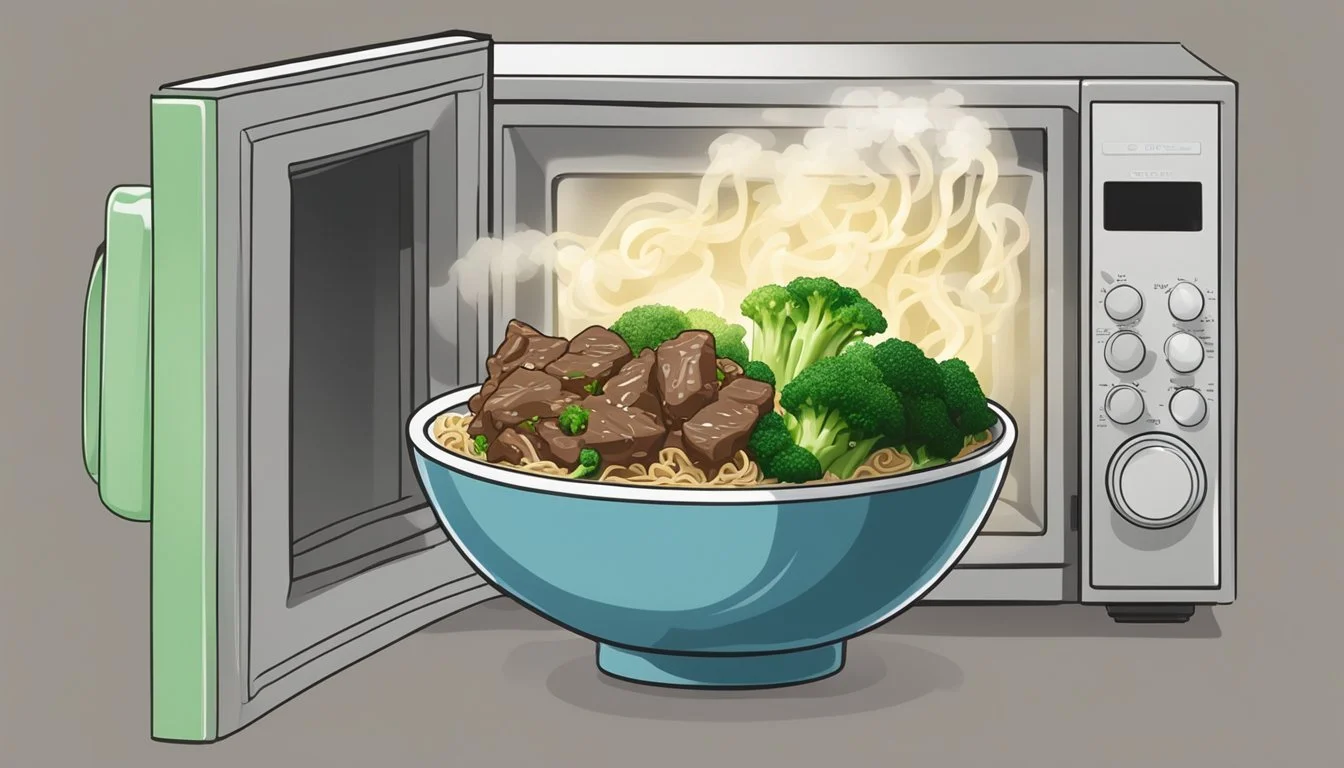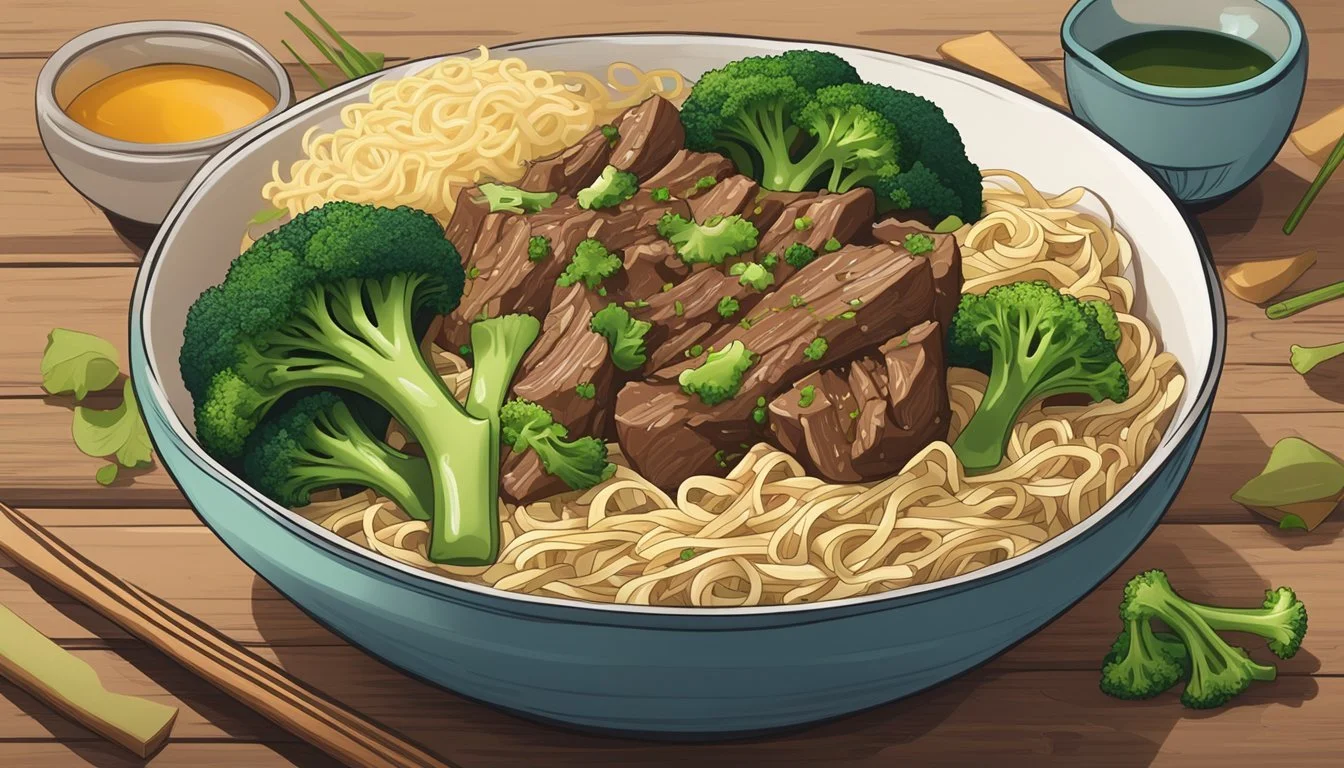How to Reheat Beef and Broccoli with Noodles
Best Methods for Perfect Taste
Reheating beef and broccoli with noodles can be a quick and delicious way to enjoy leftovers for dinner or lunch. The best method to reheat this dish while maintaining its flavors and texture involves using a skillet or wok on medium heat. This ensures that the beef remains tender and the broccoli stays crisp without becoming soggy.
A good approach is to add a splash of broth or water to the skillet to prevent the noodles from drying out. This creates steam, which helps to heat the food evenly. Stir frequently to ensure that the ingredients are warmed through without overcooking. Adding a bit of fresh garlic or ginger can also enhance the flavors as you reheat the dish.
Microwave reheating is another option for those in a hurry. Place the beef, broccoli, and noodles in a microwave-safe container with a lid. To avoid overcooking, heat in short intervals, stirring in between to distribute the heat evenly. Reheating leftovers with care can make your quick meals just as enjoyable as when they were first cooked.
Understanding the Basics of Reheating
Reheating leftovers like beef and broccoli with noodles requires attention to food safety and understanding the effects on texture and flavor. Proper techniques ensure a delicious and safe meal.
Food Safety Considerations
When dealing with leftovers, proper storage is crucial to prevent foodborne illnesses. Refrigerate leftovers within two hours of cooking. Store them in airtight containers in the fridge or freeze them if they won’t be consumed within three to four days.
For reheating, the internal temperature should reach at least 165°F (74°C) to kill any potential bacteria. Use a food thermometer to check this temperature. Also, avoid reheating food multiple times to reduce the risk of bacterial growth.
Effects of Reheating on Food Texture and Flavor
Reheating can alter food texture and flavor, particularly in dishes like beef and broccoli with noodles. Beef can become dry if not reheated properly, so methods that retain moisture are essential. Using an oven or stove at low temperatures, adding a bit of water or broth, and covering the dish can help maintain tenderness.
Broccoli is prone to become soggy during reheating. Briefly warming it in the oven or steaming it can help preserve its texture. For noodles, avoid overcooking by reheating them separately from the beef and broccoli, if possible, and mixing them together just before serving.
Pre-Reheating Preparation
Proper preparation is crucial to ensure your reheated beef and broccoli with noodles tastes fresh and delicious. This involves gathering the right equipment and ingredients, as well as prepping your leftovers for optimal results.
Gathering Necessary Ingredients and Equipment
To efficiently reheat beef and broccoli with noodles, you will need a few key ingredients and equipment. Start with olive oil or another cooking oil to prevent sticking. Garlic and soy sauce can enhance flavor if needed. Ensure all ingredients like the noodles, beef, and broccoli are readily available.
You'll also require essential equipment:
A non-stick frying pan or skillet.
A microwave-safe bowl for those using a microwave.
A sharp knife to cut any large leftover pieces into smaller, uniform sizes.
Tongs or a spatula for stirring.
Prepping Leftovers for Optimal Results
Before reheating, proper preparation of leftovers can make a significant difference. Begin by separating the beef, broccoli, and noodles to ensure they heat evenly. If any pieces are too large, use a sharp knife to cut them into manageable, even-sized portions.
Place leftover noodles in a microwave-safe bowl or spread them evenly in a non-stick frying pan. Add a splash of olive oil or water to prevent drying. For added flavor, mix in a bit of garlic and soy sauce.
Stir the ingredients well to ensure they are coated and ready for reheating. This prep step helps maintain moisture and evenly distributes heat, resulting in a tastier dish.
Reheating Methods Explained
Reheating beef and broccoli with noodles can be accomplished through different methods, each offering unique benefits. Whether opting for a stovetop, microwave, or oven method, preserving the taste and texture is key.
Stovetop Technique for Beef and Broccoli with Noodles
Using the stovetop is a classic and effective method for reheating beef and broccoli with noodles. A wok or skillet is recommended for this process. Begin by adding a small amount of oil to the pan to prevent food from sticking and to help distribute heat evenly.
Once the oil is hot, add the noodles, broccoli, and beef. Stir frequently to ensure even heating and to maintain the crispness of the broccoli. If the noodles appear too dry, a small amount of water or broth can be added to restore moisture. Heat for approximately 5-7 minutes or until everything is thoroughly warmed. The stovetop method preserves flavors effectively.
Microwaving for a Quick Meal
Microwaving is perfect for those who need a quick reheating method. Use a microwave-safe bowl to combine the beef, broccoli, and noodles. Adding a small amount of water before heating helps maintain moisture.
Cover the bowl with a microwave-safe lid or plate to trap steam, which helps in reheating. Set the microwave to high and heat for 2-3 minutes. Stir halfway through to ensure even heating. This method is quick and easy but may not preserve the texture as well as other methods.
Utilizing the Oven for Even Heating
Utilizing the oven method can provide even and gentle heating, ideal for preserving the texture of the stir-fry. Preheat the oven to 350 degrees Fahrenheit. Place the beef, broccoli, and noodles in an oven-safe dish. To maintain moisture, cover the dish with aluminum foil.
Heat in the oven for about 10-15 minutes or until everything is heated through. Stir halfway for even heating. This method is especially useful for large portions and maintains the quality of the ingredients better than the microwave.
Enhancing Flavor During Reheating
Reheating beef and broccoli with noodles can be transformed into a flavorful experience by paying attention to sauces, seasonings, and managing spice levels, as well as sodium content.
Incorporating Sauces and Seasonings
To rejuvenate the dish, soy sauce, oyster sauce, and stir fry sauce are excellent choices. Soy sauce can add depth with its umami flavor, while oyster sauce provides sweetness and richness. For a more fragrant touch, sesame oil can be drizzled during the final stages of reheating.
Consider adding fresh garlic and ginger to heighten the aroma and taste. A small amount of sugar can balance out the savory notes, whereas pepper can introduce subtle heat. Be sure to evenly coat the beef, broccoli, and noodles with these seasonings for a harmonious flavor blend.
Managing Spice Levels and Sodium Content
For those mindful of their spice tolerance and sodium intake, low-sodium soy sauce is a preferable alternative. This allows the dish to retain its savory flavors without overwhelming saltiness. Adjust the spice levels by starting with only a small addition of spices and tasting before adding more.
When reheating, a bit of vegetable broth can add moisture and help incorporate flavors without adding unnecessary calories or fat. Final garnishes like green onions or a sprinkle of sesame seeds can infuse additional layers of flavor without altering the nutritional profile too drastically. This approach ensures that the reheated dish remains balanced and delicious.
Serving and Garnishing
When preparing and reheating Beef and Broccoli with Noodles, it is essential to focus on the proper serving temperatures and finishing touches for an appealing presentation. Ensuring the dish is served hot and beautifully garnished enhances both its taste and visual appeal.
Proper Serving Temperatures
Beef and Broccoli with Noodles should be served hot. Reheating the dish to an internal temperature of 165°F (74°C) is crucial for food safety and optimal enjoyment. Use a food thermometer to check the temperature in the thickest parts of the beef and noodles.
While warming, stir the contents to distribute heat evenly, avoiding cold spots. If using a microwave, cover the dish with a microwave-safe lid to maintain moisture. For stovetop reheating, a non-stick skillet with a lid can be effective in retaining heat and moisture. Serve the dish immediately after reheating to maintain its fresh, savory appeal.
Finishing Touches for Presentation
To elevate the dish's presentation, consider garnishes that add flavor and visual interest. Sesame seeds are a popular choice, providing a nutty flavor and a delicate crunch. Toast the sesame seeds lightly before sprinkling them over the dish.
Green onions, finely sliced, can add a fresh, sharp contrast to the savory beef. Their vibrant green color also adds a lively touch to the plate. Drizzle a bit of toasted sesame oil over the top for an aromatic finish that enhances the overall flavor profile.
For a final touch, a few thinly sliced pieces of fresh ginger can be added. It adds a zingy freshness that complements the beef and broccoli beautifully. Carefully arranging the elements will make the dish as visually pleasing as it is delicious.
Storage Tips for Future Meals
Proper storage of beef, broccoli, and noodles can help maintain their quality and ensure food safety. Key points include refrigerating or freezing promptly and utilizing suitable storage containers.
Best Practices for Storing Leftovers
Leftovers should be cooled to room temperature before storing. This helps prevent bacterial growth. Use shallow containers for quicker cooling.
Refrigerate leftovers within 2 hours of cooking. Store beef, broccoli, and noodles in separate airtight containers to maintain their individual textures. In the fridge, consume within 3-4 days.
For longer storage, freeze the components. Beef and broccoli can be frozen in zip-top bags or freezer-safe containers for up to 3 months. Label and date all items to avoid prolonged storage. When ready to use, thaw in the fridge overnight for optimum food safety.
Making Meals Ahead for Efficiency
To make meals ahead, prepare and portion the ingredients separately. Cook the beef, blanch the broccoli, and prepare the noodles. Mix only when ready to eat, to keep flavors and textures intact.
Freezer-friendly meals can be made by combining cooked beef and broccoli, but leaving noodles separate. This avoids sogginess. Portion these combinations into individual servings.
Store prepared meals in stackable, portion-sized containers. Vacuum-seal bags can also be useful for saving space and preserving food longer. This approach makes it quicker and more efficient to reheat meals during busy days, minimizing food waste and saving on your food budget.
Alternative Ingredients and Variations
Using alternative ingredients can personalize your reheated beef and broccoli with noodles, accommodating different dietary choices and preferences.
Substituting Meat and Vegetables
There are many flexible options for substituting meat. Chicken, shrimp, and tofu are popular alternatives to beef in this recipe. Each protein brings a unique texture and flavor, catering to various tastes and dietary needs.
Various vegetables can be used to complement the dish. While broccoli florets are traditional, consider adding carrot slices, mushrooms, or even snap peas. These vegetables not only add color but also enhance the nutritional content and flavor profile.
Beyond Steak Tips or other meat substitutes can offer a vegan option. Incorporating these alternatives enables the dish to cater to vegetarians and vegans while still providing satisfying flavors.
Choosing Different Types of Noodles
The type of noodle can significantly affect the texture and taste of the dish. Common noodle choices include egg noodles, udon noodles, ramen noodles, and soba noodles. Each type of noodle offers a different experience.
Egg noodles have a rich and tender texture, ideal for soaking up sauces. Udon noodles are thicker and chewier, providing a hearty base. Ramen noodles cook quickly and absorb flavors well, while soba noodles bring a nutty taste that's perfect for those seeking a unique twist.
Lo mein noodles and even spaghetti can be suitable substitutes. This flexibility with noodle choices allows one to adapt the recipe to what's available or preferred, ensuring a delicious outcome every time.




